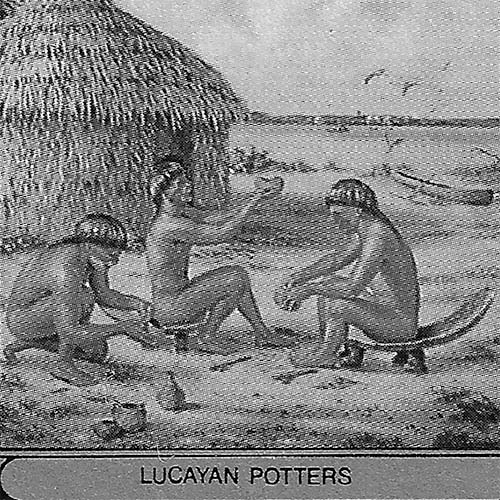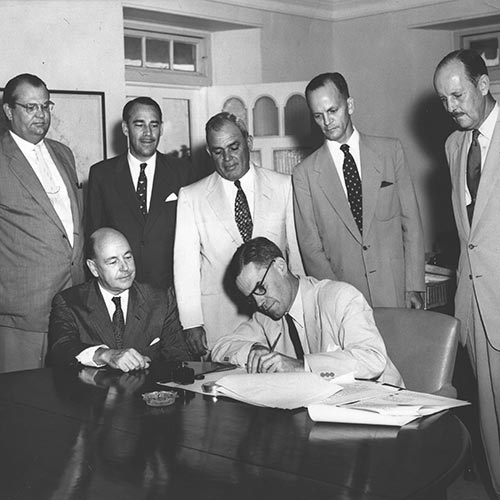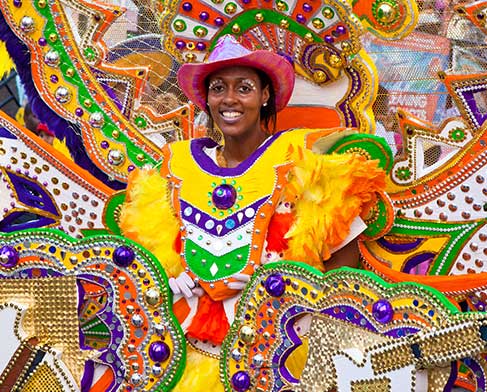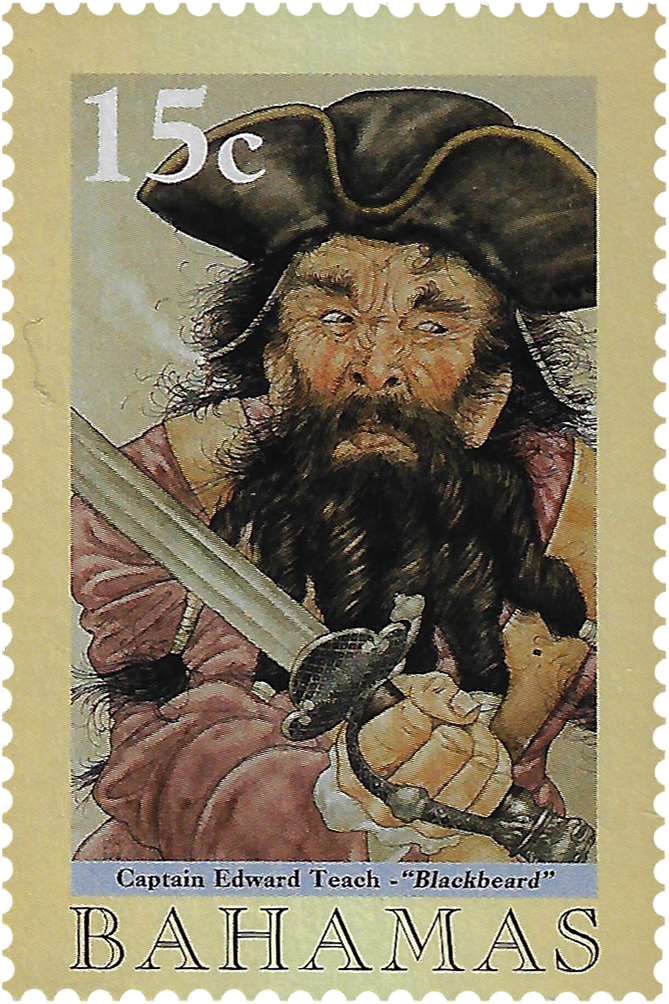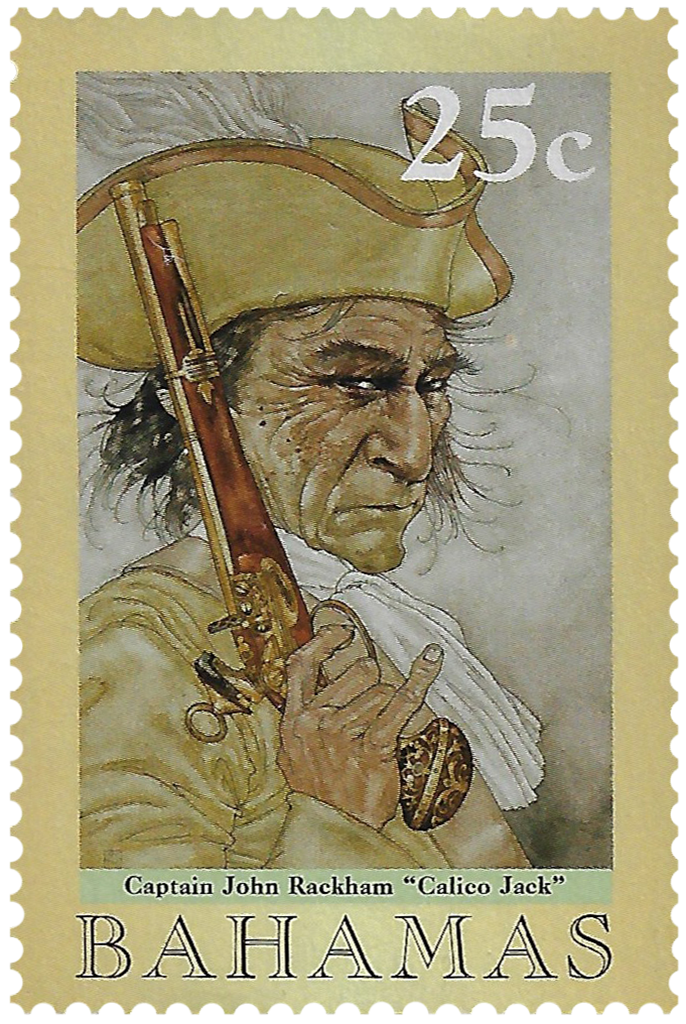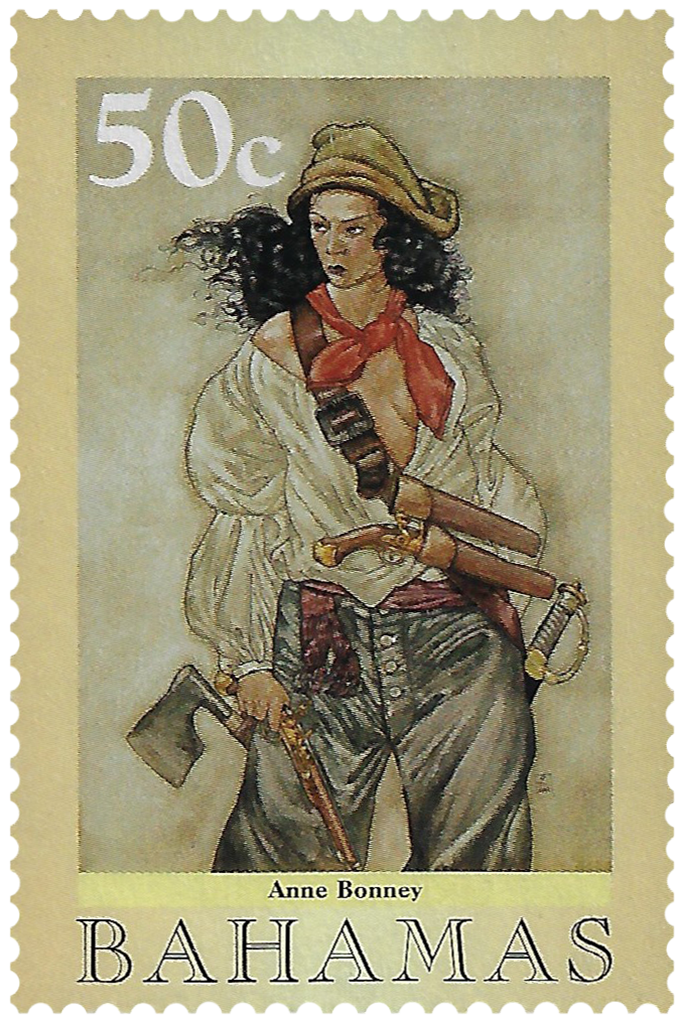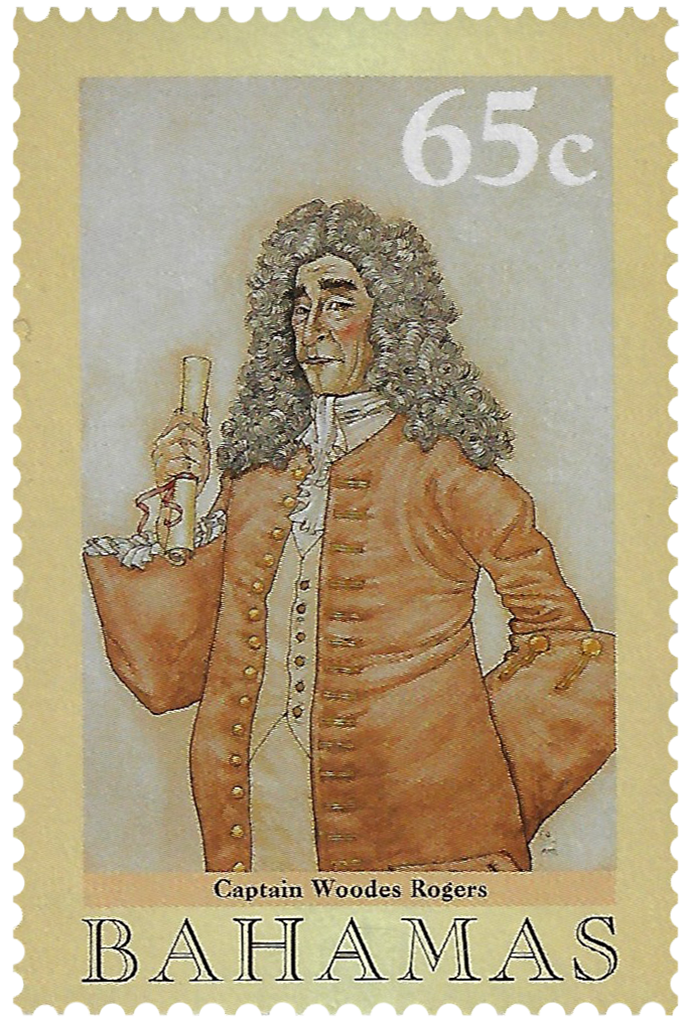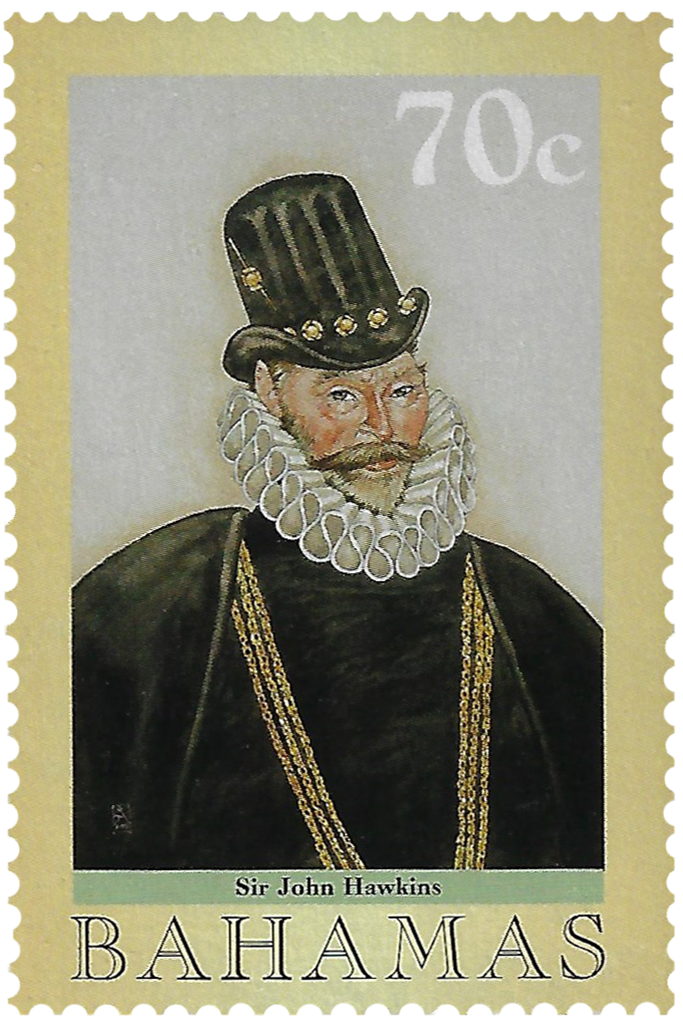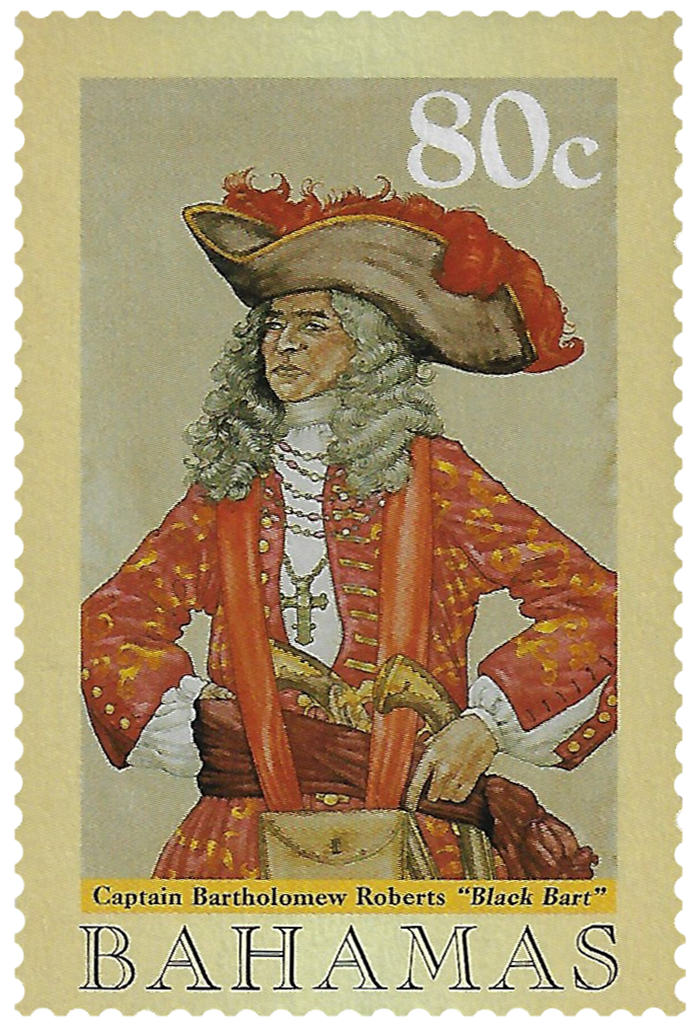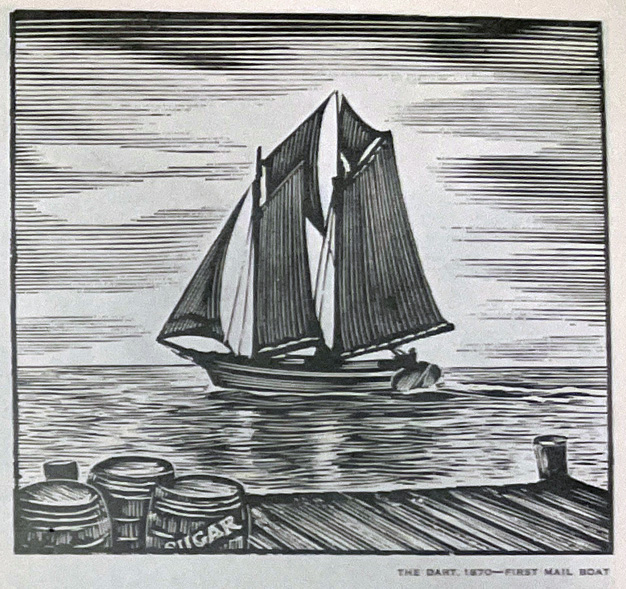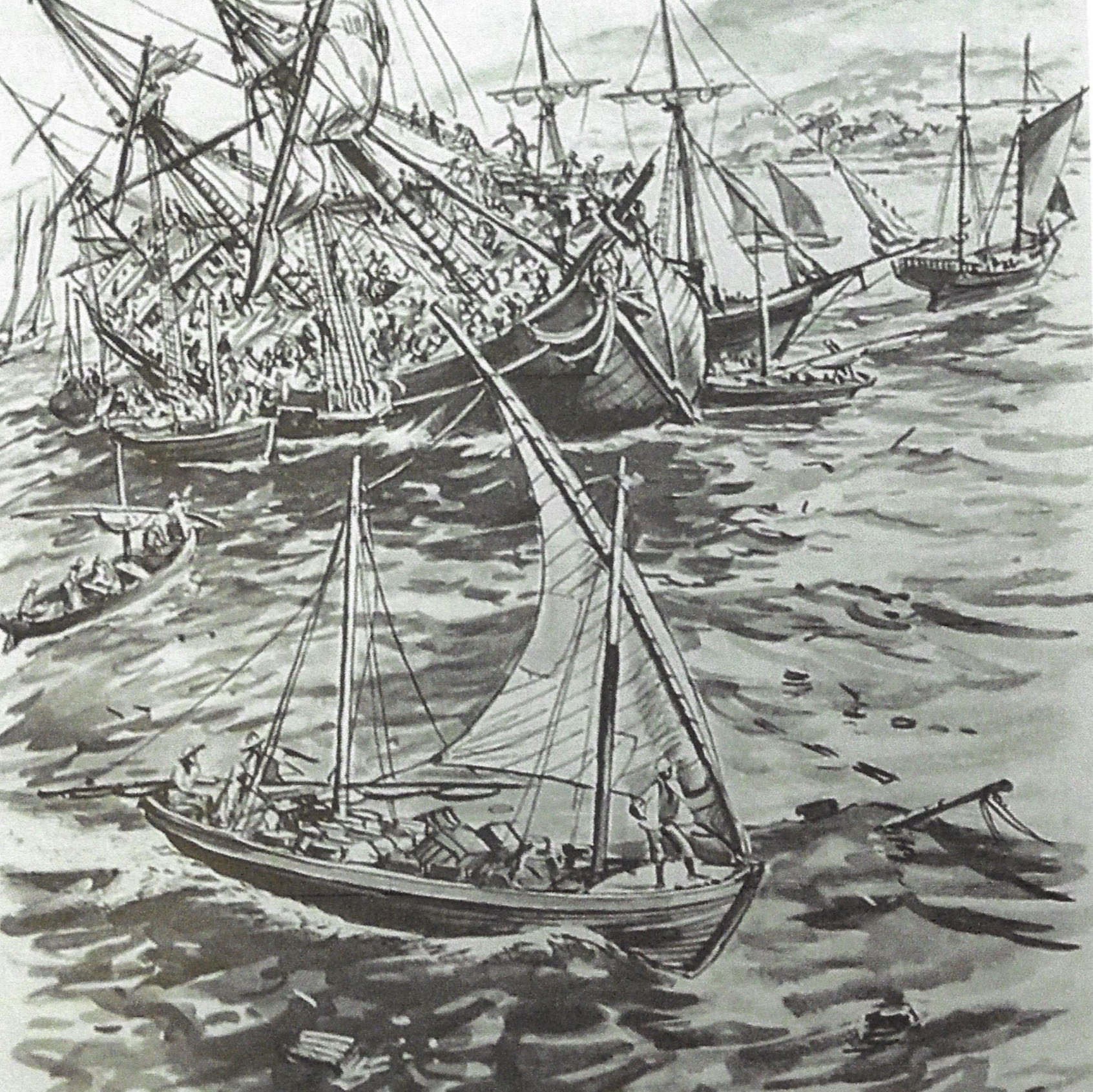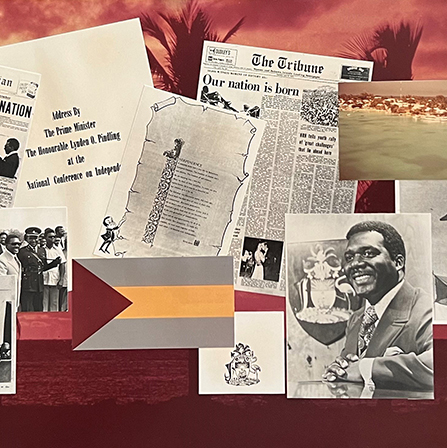Maritime & Aviation
Pirates!
Grand Bahama and the surrounding islands and cays were almost certainly used by pirates to prey on merchant shipping in the Florida Channel. The bays and anchorages offered strategic locations from which to wait for unsuspecting ships traveling along what was known as the "Golden Road" back to Spain and Europe.
The channel was a favorite for all ships plying Caribbean waters, because the constant current of four knots carried them northward where the westerly winds began. Needing to avoid the sand bars off the Carolinas, some convoys turned eastward at Great Isaac Rock north of Bimini and sailed directly into the deep waters of the Atlantic. They traveled in convoy for safety and all lights were doused at night to escape attention of privateers and pirates who swarmed the northern Bahamas.
The shipping channels are littered with the wrecks of ships that never made the passage to the open Atlantic. Many of these were treasure ships, laden with gold, silver and gems from mines throughout South and Central America. Though piracy played a part in the loss of treasure along the shipping channels, the treacherously shallow waters and coral reefs, as well as winds and waves of seasonal storms and hurricanes accounted for the greater loss. Sea floors around the Bahamas became a ship graveyard and has become the focus for many treasure hunters.
Find out about sunken and buried treasure in the Bahamas
A Pirate Empire
During the Golden Age of Piracy (1690 to 1725), the Bahamas had the greatest concentration of pirates in the Caribbean.
Busy shipping lanes ran between the islands. Surrounding waters were too shallow for man-of-war ships but suited the shallow-draft, more maneuverable craft favored by pirates. The law was not enforced consistently, pirates were feared, and often controlled harbors.
Many pirates became legends and icons. Edward Teach, notoriously known as Blackbeard, lived and plundered throughout the Bahamas. Sir Henry Morgan was a Welsh privateer who was well-known for his attacks against the Spanish and was later a governor of Jamaica. Two women, Anne Bonny and Mary Read, became famous for their own pirating adventures.
Sometimes the temptation of treasure forced pirate behavior. In 1682 or 1683, the Governor of Jamaica commissioned highly respected American privateer Thomas Paine to sail "to the island of Bahama which is desert and uninhabited" and seize all pirates who lived there. When he arrived at what is today West End, Paine met other ship captains who were preparing to recover a treasure of silver from a Spanish wreck offshore. Captain Paine immediately forgot his original mission and joined the salvage operation.
While searching for gold and other plunder, pirates often accomplished great achievements in navigation, discovery and seamanship.
The End of the Golden Age of Piracy
For the Bahamas, the peak of piracy was at the turn of the 18th century. A famous pirate named Benjamin Hornigold, who sailed out of the protected harbors of Nassau, declared the island the Pirate’s Republic. Approximately 100 people lived in Nassau at the time alongside a population of approximately 1,000 pirates. The secluded cays of the Bahamas provided the perfect home base for pirates looking to plunder ships and colonies to amass great fortunes.
On September 5, 1717, King George I issued the “Proclamation for Suppressing of Pirates”—The King’s Pardon. This stated that the British Crown was willing to grant clemency to any pirate who surrendered themselves to a governor of the colonies by September 5, 1718.
Hundreds of pirates who believed they would be criminals and fugitives until they died were suddenly free, and they took the offer. Even Benjamin Hornigold accepted the King’s Pardon and spent the next several years hunting down pirates for England.
Meet Some Pirates
Introducing a few of the infamous pirates and characters of pirate lore who plied the waters of the Pirate's Republic around the Bahamas islands in the 1700s.
Captain Edward Teach – "Blackbeard"
Perhaps the most notorious pirate who ever lived, Blackbeard, was an English privateer whose pirate career was short, but memorable. Historians believe Edward Teach, or "Thache," might have originally been a gentleman from a prominent family in Spanish Town, Jamaica.
Blackbeard is reported to have served as a privateer during Queen Anne's War, from 1701 – 1714. He first appears in the records as a pirate when, in 1715, a fleet of Spanish treasure ships were wrecked in a hurricane on Florida’s Atlantic coast. English pirates and privateers came to plunder the vessels, including Edward Teach. He spent the next few years raiding merchant ships and terrorizing people along the Virginia and Carolina coasts and in the Caribbean Sea.
A converted French slave ship became his flagship which he named "Queen Anne's Revenge." He cultivated an image as a fierce and savage pirate, though historical facts don’t actually confirm it. He was described as a large man with “fierce and wild” eyes who kept several pistols on a holster across his chest. His thick black beard held lighted matches that smoked “like a frightful meteor.”
The 1724 book "A General History of the Robberies and Murders of the Most Notorious Pyrates" by Captain Charles Johnson helped create the Blackbeard legend. Johnson portrayed Blackbeard as a bloodthirsty warrior who battled with “lighted matches under his hat, which, appearing on each side of his face, his eyes naturally looking fierce and wild, made him altogether such a figure that imagination cannot form an idea of a Fury from Hell to look more frightful."
In 1718, with a four-ship flotilla of hundreds of pirates, Blackbeard blockaded the port of Charleston for nearly a week. Later that year, he established a base in a North Carolina inlet and forcibly collected tolls from shipping in Pamlico Sound. He formed a prize-sharing agreement with Charles Eden, the serving governor of the North Carolina colony.
His luck ran out late in 1718. Carolina planters and the lieutenant governor of Virginia, Alexander Spotswood, sent a British naval force under Lieutenant Robert Maynard after the pirate. Blackbeard was ambushed on November 22nd, at Ocracoke Inlet on the North Carolina coast. Maynard's ships pulled within shouting distance. "At our first salutation,” Maynard wrote, "Blackbeard drank damnation to me and my men, whom he styled sniveling puppies, saying, he would neither give nor take quarter."
After a brutal fight, Blackbeard was killed. "He fell with five shot in him and twenty dismal cuts in several parts of his body," Maynard recalled. Maynard returned to Virginia with the surviving pirates and the grim trophy of Blackbeard's severed head hanging from his ship's bowsprit.
The most famous legend about Blackbeard is his buried treasure, which has never been found and probably never existed. The wreck of the Queen Anne’s Revenge was discovered off the coast of North Carolina by divers in the mid-1990s. Many artifacts have been recovered but no treasure – so far.
Captain John Rackham – "Calico Jack"
Born around 1682, Captain John Rackham was an English pirate captain operating in the Bahamas and Cuba during the early 1700s. He came to be known as Calico Jack because of the calico clothing he wore, and "Jack" is a nickname for John. As quartermaster on pirate Charles Vane's sloop, Ranger, he led the crew in a mutiny. After seizing control of the sloop he became notorious for plundering small ships from New York City to Bermuda and throughout the Caribbean.
In 1719, Rackham arrived in Nassau to take advantage of the King's Pardon and obtain a royal commission from Governor Woodes Rogers. In 1720, he returned to his pirate ways after meeting Anne Bonny, a married woman, stealing a British sloop. Both Anne and Mary Read, disguised as a man, served in his crew.
Rackham was captured by Royal Navy pirate hunter Jonathan Barnet in 1720, put on trial by Sir Nicholas Lawes, Governor of Jamaica, and then hanged in November 1720 in Port Royal, Jamaica.
Anne Bonny and Mary Read
Female pirates were not unknown in the 1700s. Two of the most famous are Anne Bonny and Mary Read. Little is known of their lives and background, but much their story comes from Captain Charles Johnson's book "A General History of the Robberies and Murders of the Most Notorious Pyrates" originally published in 1724.
Anne Bonny was born in Ireland around 1700. She moved to the Carolina provinces of the New World when she was about ten years old. Married in 1715 to a small-time pirate named James Bonny, she moved to the pirate sanctuary of Nassau in the Bahamas. James Bonny may have served as an informant to then Governor Woodes Rogers. While in Nassau, Anne met Calico Jack Rackham and became his pirate partner and lover. Insert 2003 Scott 1059
Mary Reid was born in England in 1695. She came to live a dual existence, first posing as her deceased half -brother in order to obtain money from an inheritance. She served in the military, and eventually married a fellow soldier after revealing her true sex. Upon the death of her husband, Mary returned to masquerading as a man and took to the sea and a life of piracy.
Redheaded with a fiery temper, Bonny didn't conceal her gender from shipmates, but she disguised herself as a man while fighting and pillaging, as did Read. They earned a reputation for ruthlessness and were described as “very profligate, cursing and swearing much, and very ready and willing to do anything on board.” They were captured, along with Calico Jack, in October 1720. Both women were sentenced to death, but their executions were stayed because both were pregnant.
Mary Read died in 1721 after giving birth in prison. Anne Bonny's fate after her prison sentence is uncertain. Some reports say that Anne Bonny’s father paid a ransom for his daughter and brought her back to his plantation in the Carolina colonies. It is also said that she gave birth to Rackham’s child there, married a man named Joseph Burleigh, and had eight children. Those same reports say that she died on April 25, 1782, in South Carolina.
Read: "If There’s a Man Among Ye: The Tale of Pirate Queens Anne Bonny and Mary Read" from Smithsonian Magazine, August 9, 2011
Captain Woodes Rogers - The Governor
Governor Woodes Rogers, a former pirate himself, composed a “most wanted” list of ten notorious outlaws, including Blackbeard, and vowed to bring them all to trial.
On January 6, 1718, he was named Captain General and Governor in Chief of Nassau, and effectively ended its period as a Pirate Republic. Many of the pirates living in Nassau at the time accepted the King’s Pardon and Rogers began to rebuild Nassau’s forts and restore order to the town. His governorship was not smooth sailing, however, as pirates like Blackbeard and Charles Vane fought to keep their hold on the island. Rogers at one point left the governorship to return to England. He eventually returned to Nassau, where he again ruled as governor and live until his death in 1732, well after the Golden Age of pirates had ended.
Sir John Hawkins
Son of a merchant, Sir John Hawkins was born in England in 1532. He became a sea captain and in 1562 became the first Englishman to start trading in slaves, capturing people in Sierra Leone and selling them to Spanish settlers in the Caribbean. His partner in slave ships was Francis Drake, who was Hawkins' cousin.
In 1577, he used his skills as a shipwright to help introduce a new type of warship, more maneuverable, faster and heavily armed than any warships built before. Many of these ships took part in the great battle against the Spanish Armada in 1588. Hawkins was third in command during the Armada battles and was knighted for his service by Elizabeth I. Shortly thereafter he is credited with inventing the naval blockade, stationing ships in the Azores to intercept Spanish treasure ships returning from the New World.
Hawkins founded a charity which is still in operation today, dedicated for the relief of sick and elderly mariners. For more than 400 years help has been granted to needy or disabled men or women who served in the Royal Navy, Royal Marines, WRNS, Queen Alexandra's Royal Naval Nursing Service, or were employed in the Royal Dockyards in the construction, repair, maintenance or re-fitting of Royal Navy vessels.
Hawkins and his crew were some of the first travelers from Europe to observe tobacco use in the Americas. In 1565, they transported tobacco leaves and introduced the practice of smoking to England, though smoking did not become popular until years later.
In 1595 Hawkins and Drake sailed with 27 ships to raid and treasure-hunt in the Spanish West Indies. Both men fell sick during the expedition and Hawkins died the night before one of the fleet's attacks on Puerto Rico.
Captain Bartholomew Roberts – "Black Bart"
Bartholomew Roberts was a Welsh pirate who may have been the most successful pirate of the Golden Age of Piracy. Between 1719 and 1721, he is credited with capturing over 400 “prizes.” Elected captain of a pirate ship just a few weeks after joining the crew, he raided throughout the Caribbean and across the Atlantic. Originally named John Roberts, he changed his name and adopted a swashbuckling image as the pirate "Black Bart."
Tall and always well-dressed, he loved expensive clothes and jewelry and was often seen in a crimson waistcoat with an expensive hat decorated with a red feather. He dressed for battles, wearing a heavy gold chain with a diamond cross hanging from it. All of his flagships were named "The Royal Fortune" and flew a black flag.
In February 1722, Captain Challoner Ogle was dispatched by the British Government to find and capture Roberts. Ogle chased Roberts from the Caribbean and eventually caught him in Cape Lopez on the coast of Gabon. In the battle, Roberts was the first to fall, hit by cannon grapeshot. The crew threw his body overboard fulfilling their captain’s wish to be buried at sea. The rest of the pirates surrendered soon after. Captain Ogle found an enormous amount of gold on Roberts' ships.
The trial of Black Bart's pirate crew was the largest pirate trial in the history. Their execution is often considered the end of the Golden Age of Piracy.
